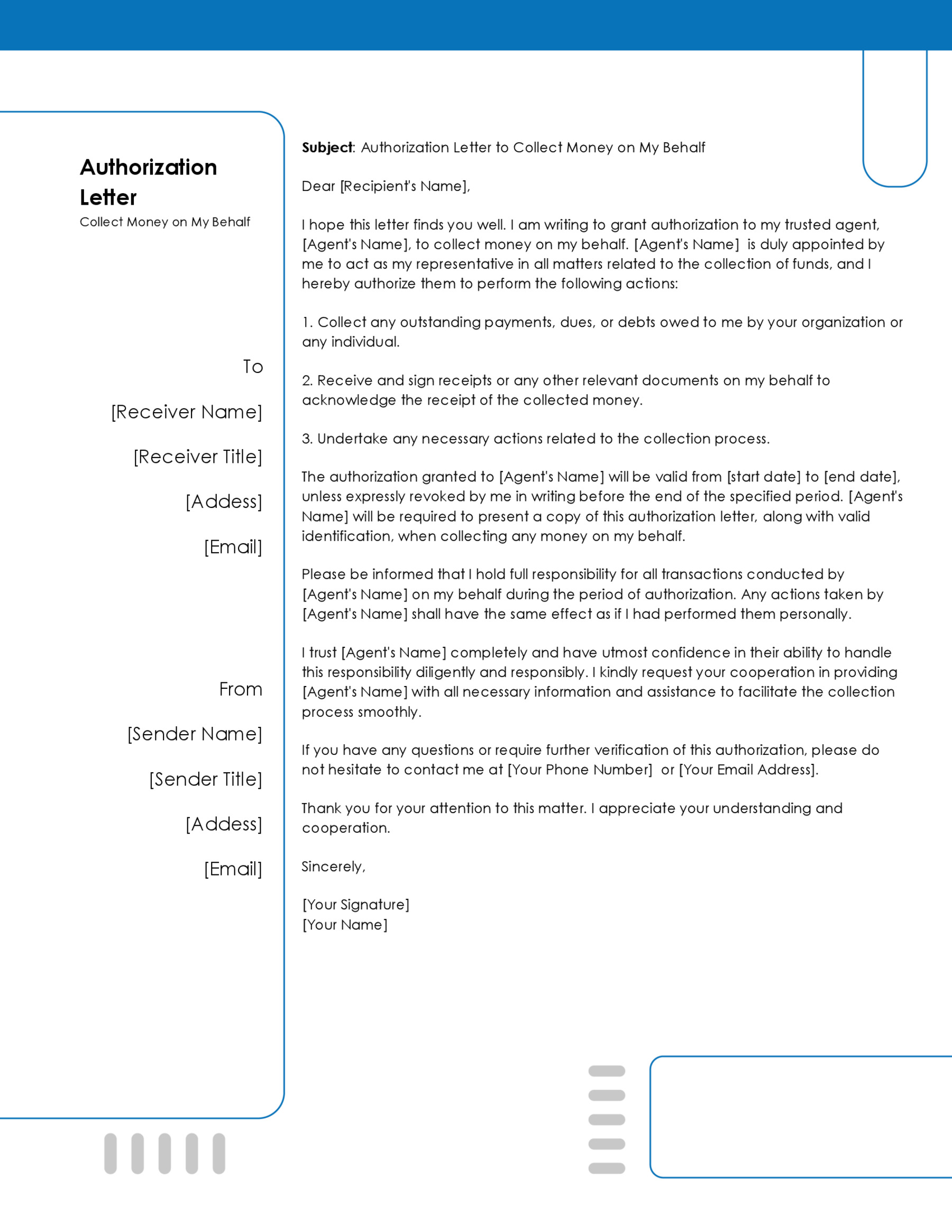An award letter is a document universities and colleges send students to inform them about the cost of attendance (COA) and possible financial aid the student is eligible to receive.
Other names for the award letter are the financial aid package, financial aid award letter, student aid package, FAFSA award letter, school offer, and financial aid offer. Students applying to more than one college must submit a Free Application for Federal Student Aid (FAFSA) at every university. They can expect to receive a different FAFSA award letter with acceptance notification from each school. Although every letter is specific to its educational institution, the universal goal of this document is to define the total amount of financial support the institution will offer each student to attend a college or university.
Schools offer different types of financial aid to help their students compensate for insufficient expected family contribution (EFC) and acquire the necessary means to pay for the cost of attendance (COA). Students are under no obligation to accept every type of financial aid offered to them. Upon receiving the offer and choosing a desired type of financial aid, they should inform the school about it with a signed copy of a letter. However, the school will not compensate for the refusal by increasing the number of accepted ones.
This article will discuss how award letters work, their essential components, and some of their shortcomings. We will also provide samples and templates for various types of financial aid to familiarize you with their structure and content.
How Does an Award Letter Work?
After your FAFSA submission is approved, you will receive the letter detailing the type and amount of financial aid the school can provide. You will receive the letter via email or at your home address.
In most cases, the information in the letter is about the upcoming school year. The details included in the letter will help you develop a budget plan for your college expenses.
The structure and content of the letters vary depending on the sender. Still, they usually include information about loans (such as Stafford and Perkins loans), grants
EXAMPLE
Pell Grants and Federal Supplemental Educational Opportunity Grants.
Scholarships, and work-study eligibility. The school will expect you to send a written response specifying which type of award you accept and which part of the aid package you reject.
note
Award letters usually arrive with the notification of acceptance or close to it. If you want to know the precise arrival time of your letter, you can contact your selected school for more information.
Key Components of an Award Letter
With a few exceptions, every aid offer you receive from your schools should contain at least some of the following information.
These are the essential components of a typical letter:
Cost of attendance
The cost of attendance (or COA for short) is the approximate amount of money you will be expected to pay for attending your selected college for an entire school year. The COA includes tuition and additional fees, your dorm room and board, books, and other school supplies. In most cases, transportation is included as well. However, COA does not include additional costs of living while studying, such as travel or medical expenses.
Expected family contribution
The expected family contribution (or EFC) is the average amount your family can set aside for your college expenses, calculated based on the financial information you have provided in your FAFSA. This is only an estimate; your family does not have to pay the expected amount. The EFC is a crucial factor in determining the aid package for each student, as students with lower EFC will get higher monetary assistance, and vice versa.
Types of financial aid
Colleges and other educational institutions offer several types of financial aid to their future and current students. This includes various forms of gift aid that require no repayment, such as Federal Pell, state, and need-based institutional grants, merit-based scholarships, employer-paid tuition benefits, and non-need-based student loans.
These are the main characteristics of each type of award:
- Gift aid (scholarship & grant) is the most beneficial financial aid for students, as it does not have to be repaid. It comes in two forms, scholarships and grants. Scholarships come directly from schools and other private institutions. They are usually awarded to exemplary students with achievements in all or specific fields, such as sports. Grants, on the other hand, can also be provided by the government. Unlike scholarships, grants are reserved for students who genuinely need financial support, such as those from low-income families. If you have to decide between several types of financial aid, it is recommended to choose gift aid first.
- A work-study program allows students to obtain college funding by working while studying. Many universities and schools participate in the federal work-study program that helps students find part-time employment to practice what they learn. Depending on the program, you will have to work for more or less money. You should know that your selected school is not obligated to find you a job if there are no openings for the position you are studying for.
- Student loans are the least popular option for students needing financial help because they have to repay them. If you have no other choice, a student loan will still be able to help you pay for college without putting you in a financial struggle. The maximum amount you can borrow as a first-year student is $3,500 per school year. Student loans offer better terms than other types of private loans, such as lower interest rates and flexible repayment. If you are eligible, you can apply for a direct subsidized or unsubsidized loan or have your parents apply for the so-called PLUS loan. The difference between the first two types is that the government will cover all interest on your subsidized loan. While you will need to pay for the interest on your unsubsidized loan. You can expect to receive up to $2,000 per school year as a first-year dependent student and as much as $6,000 per school year as an independent student. With a parent PLUS loan, your family can count on the total amount of your COA minus the total amount of other financial aid you will receive.
Net costs
The letter sometimes outlines the net cost, which is the estimated amount of money you must provide yourself to pay for your college expenses. You can calculate net costs by reducing the cost of attendance by the total amount of your scholarships and grants.
Additional information
Most letters include additional information and guidelines for accepting, rejecting, and receiving different types of financial aid. For example, your letter may inform you of the deadline for sending your response to the school and describe what you need to do to accept or decline the aid formally.
You may also find necessary information about when to expect to receive your financial support and how. Your letter may specify the period the aid will cover and the documentation you need to provide.
tip
Every letter is unique. Two schools can have very different award letters but should contain the above information in one form or another. If any information is missing from your letter, you can contact your selected school and ask for clarification before accepting or rejecting any aid. The same happens if you need help understanding its content due to acronyms or technical language.
Template FAFSA Award Letter
[Institution Letterhead]
[Date]
[Student’s Full Name]
[Student’s Address]
[City, State, Zip Code]
Dear [Student’s Full Name],
Congratulations on your acceptance to [Institution Name]! We are excited about the possibility of you joining our community in the [upcoming semester/year]. This letter outlines the financial aid package we are offering, based on the information provided in your Free Application for Federal Student Aid (FAFSA).
Overview of Your Financial Aid Package
Your total financial aid package for the [academic year/semester] is [Total Aid Amount], which is broken down as follows:
- Grants and Scholarships (Gift Aid – Does not need to be repaid)
- Federal Pell Grant: [Amount]
- [State] Grant: [Amount]
- [Institution Name] Scholarship: [Amount]
- Other Scholarships: [Amount] (Please specify any external scholarships you have been awarded.)
Total Grants and Scholarships: [Total Gift Aid Amount]
Work-Study
- Federal Work-Study: [Amount] (This amount represents what you can earn through part-time employment on or off-campus.)
Loans (Must be repaid)
- Federal Direct Subsidized Loan: [Amount]
- Federal Direct Unsubsidized Loan: [Amount]
- [Institution Name] Loan: [Amount] (If applicable.)
- Other Loans: [Amount] (Please specify any external loans you have been awarded.)
Total Loans: [Total Loan Amount]
Total Financial Aid Offered: [Total Aid Amount]
Estimated Cost of Attendance (COA)
Your estimated cost of attendance for the [academic year/semester] is [COA Amount], which includes:
- Tuition and Fees: [Amount]
- Room and Board: [Amount] (For on-campus housing. Off-campus housing may vary.)
- Books and Supplies: [Amount]
- Transportation: [Amount]
- Personal Expenses: [Amount]
To accept this financial aid package, please follow the instructions below:
- Log in to your student portal at [Portal URL].
- Navigate to the Financial Aid section.
- Review your financial aid package details.
- Accept or decline each component of your financial aid offer by [Acceptance Deadline].
- Please note that accepting loans will require additional steps, including completing loan counseling and signing a Master Promissory Note (MPN).
Should you have any questions or require further clarification regarding your financial aid package, please do not hesitate to contact our Financial Aid Office at [Contact Information].
We hope this financial aid package makes your education at [Institution Name] more accessible and we look forward to the possibility of welcoming you to our campus.
Sincerely,
[Your Name]
[Your Title]
Financial Aid Office
[Institution Name]
[Contact Information]
Sample Award Letter
Given below are sample letters:
Sample 1
Dear Jane Doe,
Congratulations on your acceptance to Prestige University! We are thrilled at the prospect of you joining our vibrant academic community this fall. Following your Free Application for Federal Student Aid (FAFSA), we have carefully reviewed your financial situation and are pleased to present your financial aid package for the academic year 20XX-20XX.
Your Financial Aid Summary
Total Financial Aid Offered: $45,000
Grants and Scholarships
- Federal Pell Grant: $6,345
- State Opportunity Grant: $3,000
- Prestige University Merit Scholarship: $15,000
- Prestige University Need-Based Grant: $20,655
Total Grants and Scholarships: $45,000
Work-Study
- Federal Work-Study: Not applicable in this package.
Loans
- Federal Direct Subsidized Loan: Not included in this package.
- Federal Direct Unsubsidized Loan: Not included in this package.
Estimated Cost of Attendance
Your estimated cost of attendance for the 20XX-20XX academic year is $50,000, which includes:
- Tuition and Fees: $30,000
- Room and Board: $10,000
- Books and Supplies: $1,000
- Transportation: $2,000
- Personal Expenses: $7,000
To proceed with your financial aid offer:
- Visit the Prestige University student portal at [portal.prestigeuniversity.edu].
- Review and accept your financial aid package by March 31, 20XX.
For assistance or questions, contact our Financial Aid Office at finaid@prestigeuniversity.edu or (123) 456-7890.
We believe this package will make your education at Prestige University accessible and we are excited about the opportunity to welcome you to our community.
Warm regards,
Susan Clark
Director of Financial Aid
Prestige University
finaid@prestigeuniversity.edu
(123) 456-7890
Sample 2
Dear John Smith,
Welcome to the State College family! Following your acceptance and the review of your FAFSA submission, we are pleased to outline your financial aid package for the 20XX-20XX academic year. Our goal is to support your educational journey by making it as affordable as possible.
Your Financial Aid Summary
Total Financial Aid Offered: $30,000
Grants and Scholarships
- Federal Pell Grant: $4,000
- State College Grant: $5,000
- Local Community Scholarship: $2,000
Total Grants and Scholarships: $11,000
Work-Study
- Federal Work-Study: $3,000
Loans
- Federal Direct Subsidized Loan: $5,500
- Federal Direct Unsubsidized Loan: $6,500
- State College Student Loan: $4,000
Total Loans: $16,000
Estimated Cost of Attendance
Your estimated cost of attendance for the 20XX-20XX academic year is $40,000, which includes:
- Tuition and Fees: $25,000
- Room and Board: $8,000
- Books and Supplies: $1,500
- Transportation: $2,500
- Personal Expenses: $3,000
To accept your financial aid package:
- Log in to your account at [studentportal.statecollege.edu].
- Review each component of your financial aid offer.
- Accept or decline parts of your package by April 15, 20XX.
Please remember, accepting loans requires completing a Loan Entrance Counseling session and signing a Master Promissory Note (MPN).
If you have any questions, please don’t hesitate to reach out to the Financial Aid Office at financialaid@statecollege.edu or call us at (321) 654-9870.
We’re here to help make your transition to State College smooth and are excited about the possibility of you joining our community.
Sincerely,
Michael Anderson
Financial Aid Counselor
State College
financialaid@statecollege.edu
(321) 654-9870
Free Templates
Given below are award letter templates:
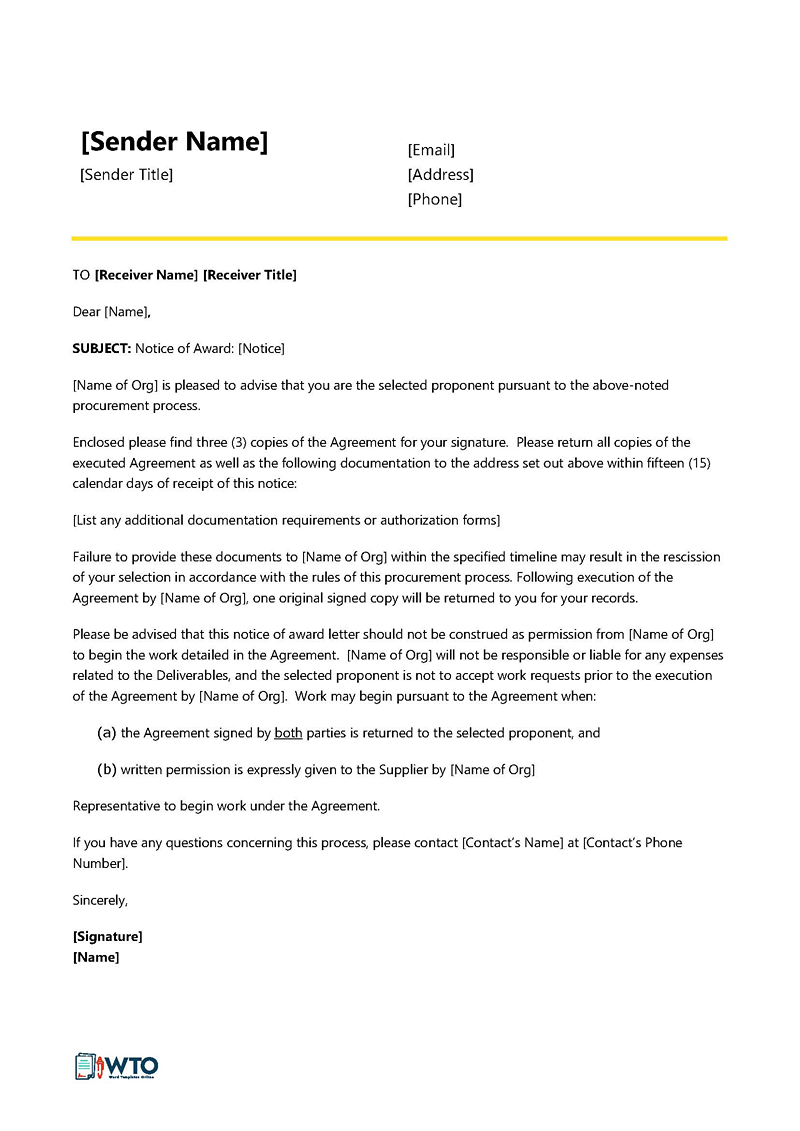
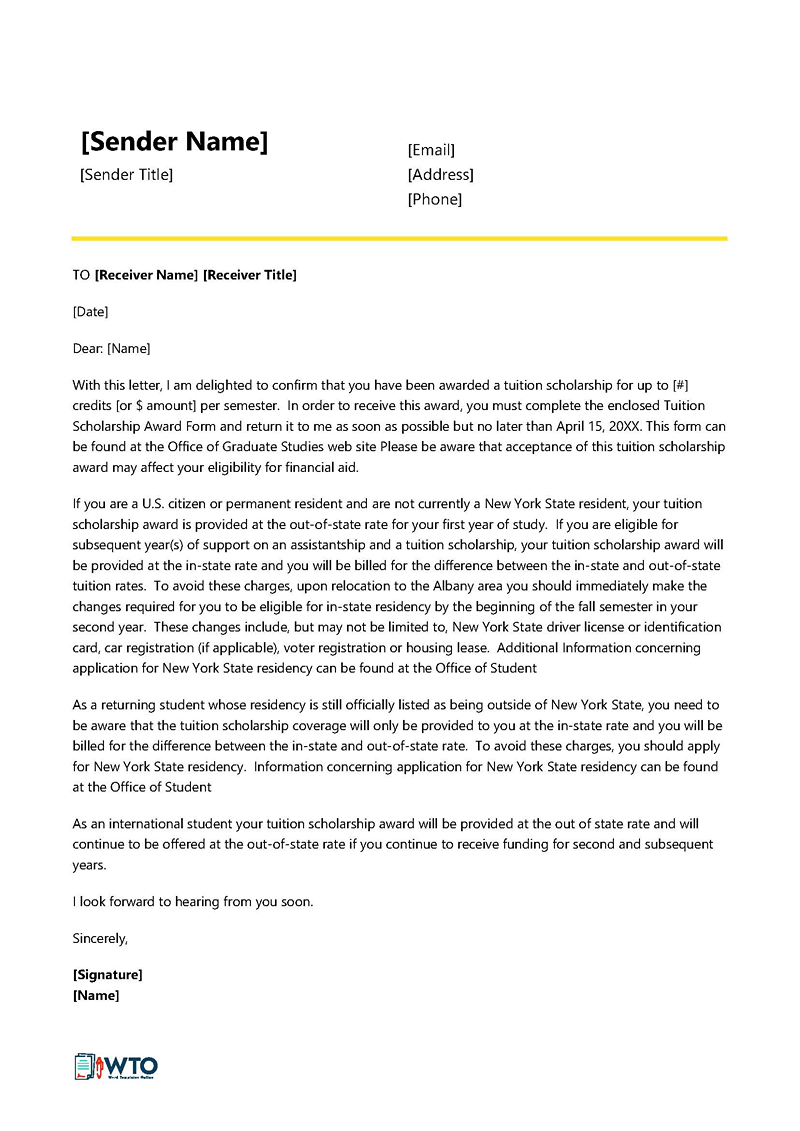
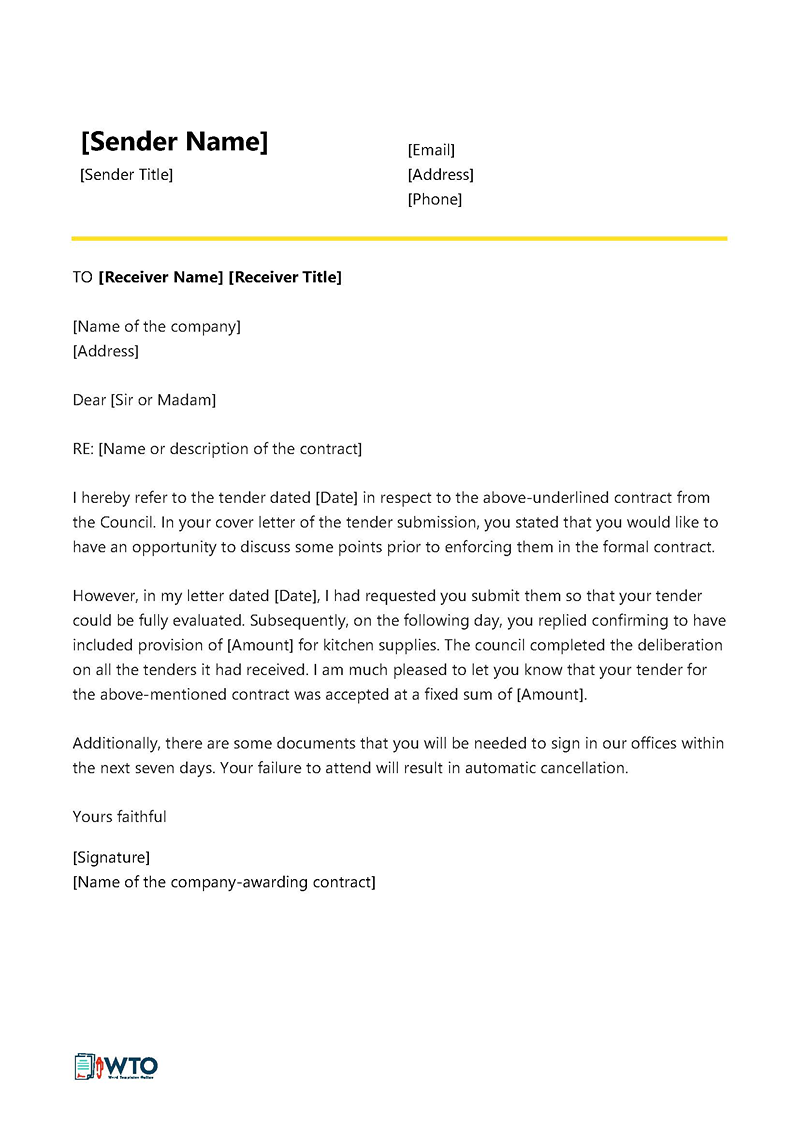
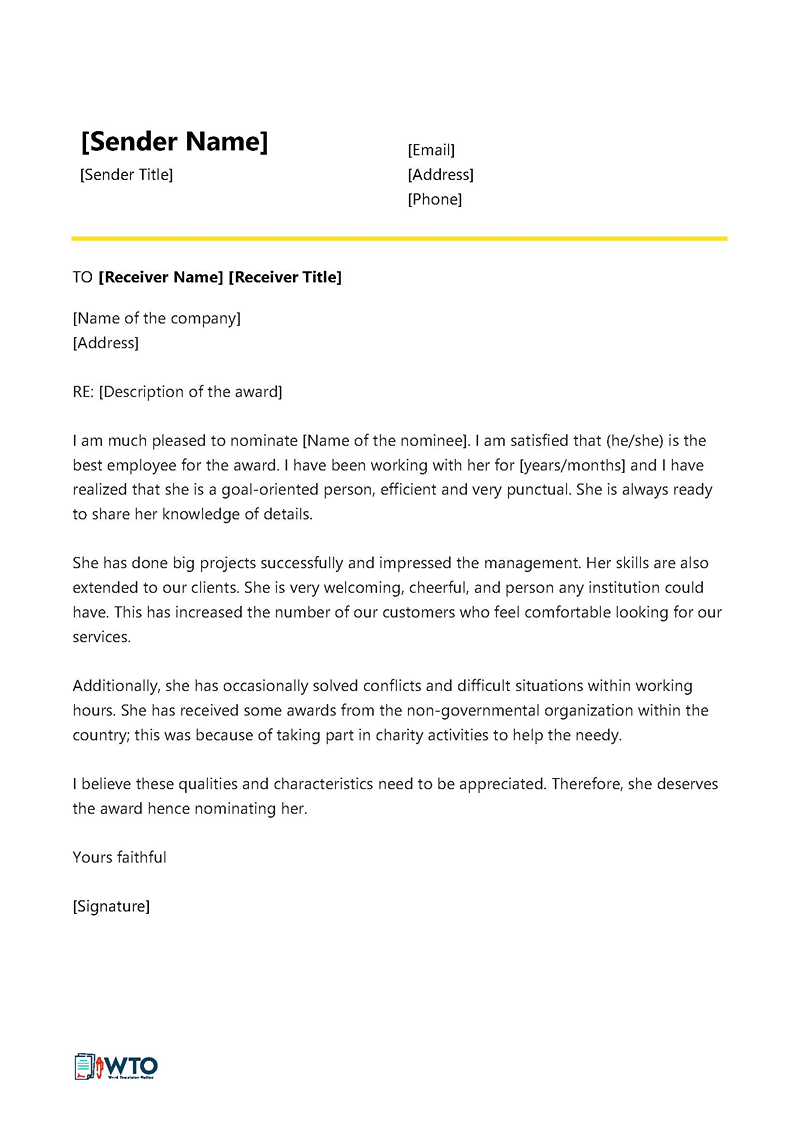
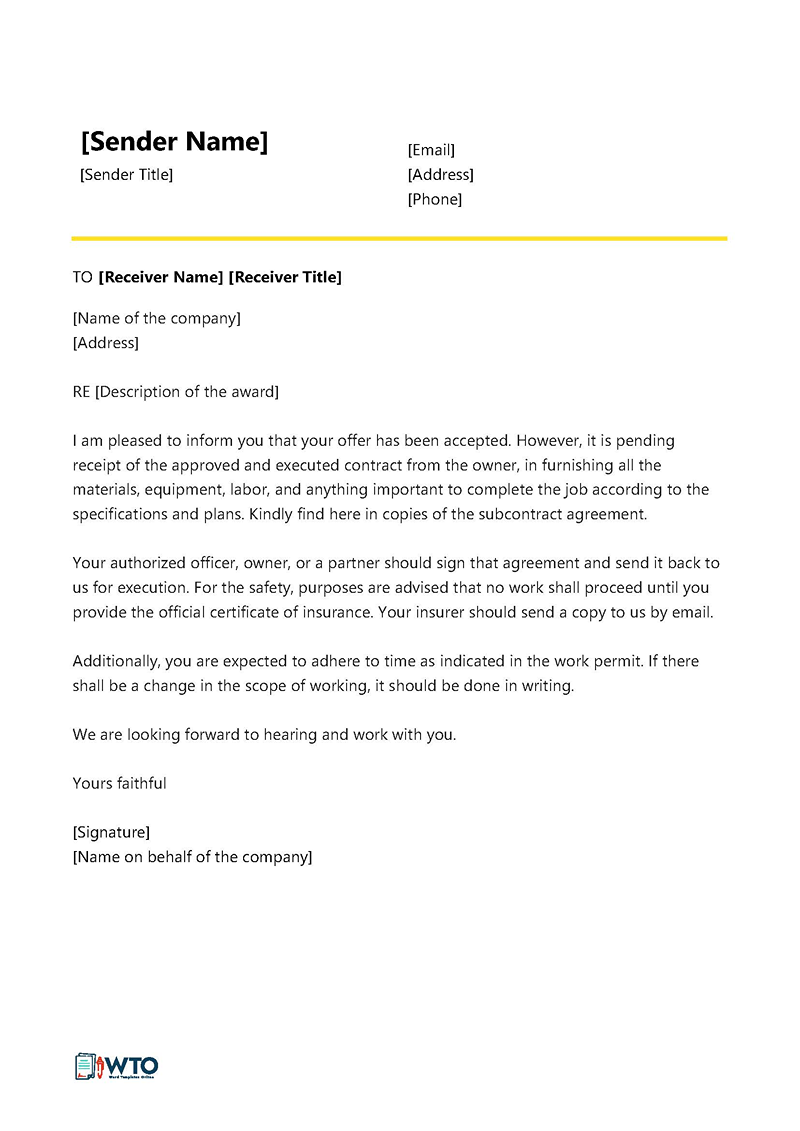
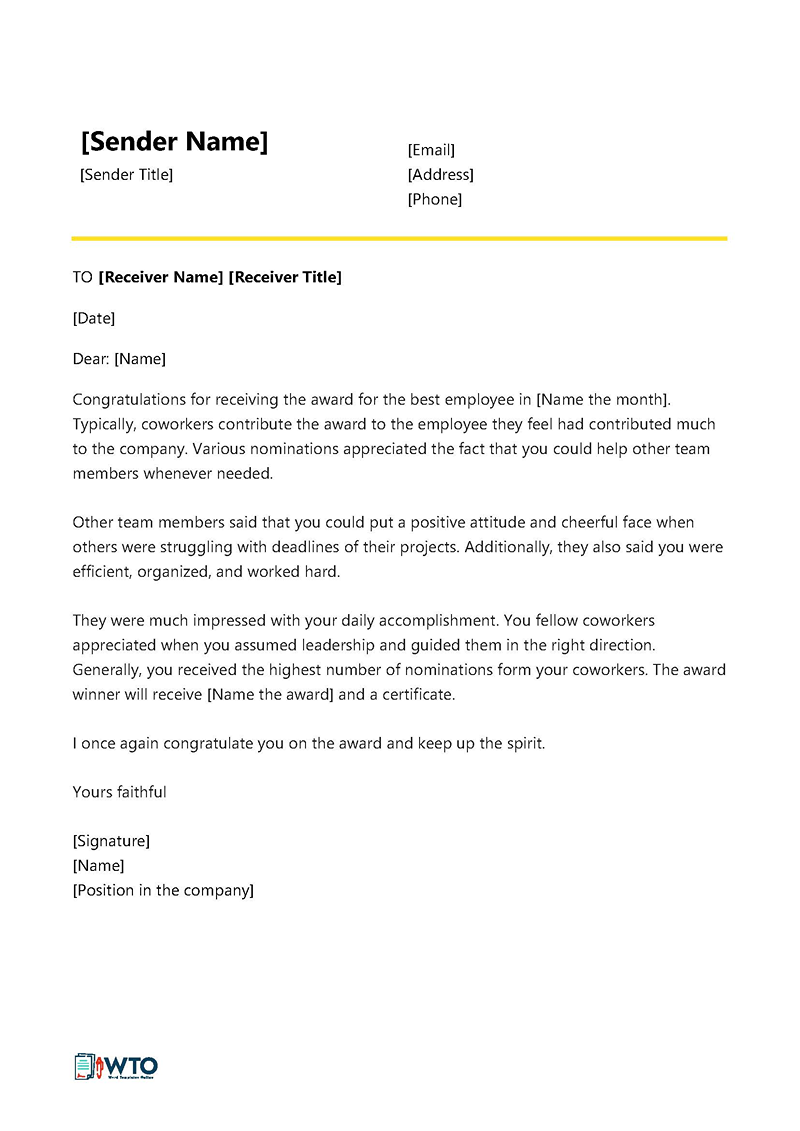
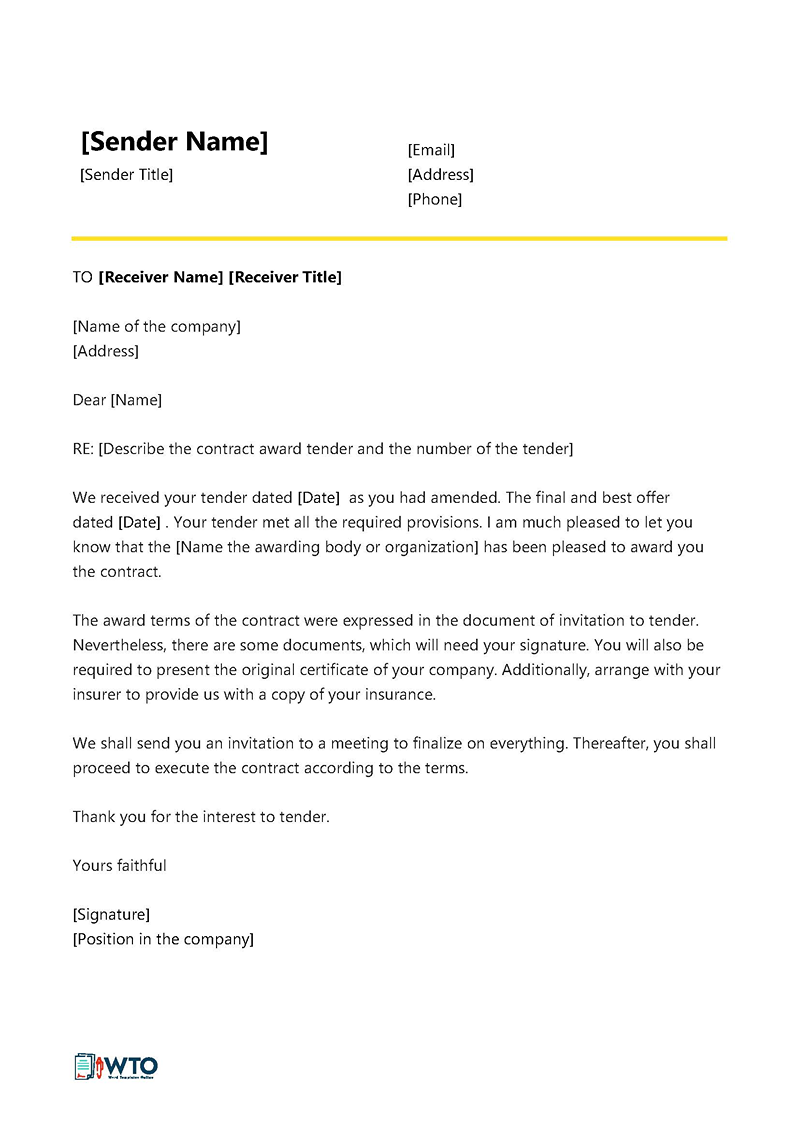
Limitations of Award Letters
A well-drafted letter should help students and their families plan for the future and organize their finances better.
Unfortunately, there are a few shortcomings in the letter that you should know about:
Different definitions of COA
The cost of attendance varies significantly from one school to another. Virtually all these letters include at least some COA information, but significant variations exist. Some schools offer limited information (they specify only the cost of tuition and fees but omit the cost of room and board and vice versa) or include everything you need to know under a different name. Some schools provide only the key components of COA, and others include only the total amount. There are even schools that provide no COA information at all.
Complex identification of award components
Financial award letters contain technical language that is difficult to understand. Most essential details, such as the cost of attendance and expected family contribution, are provided in acronyms that you can only translate with professional help. Information about loans often needs more crucial details about interest rates and repayment terms. Some letters do not specify the type of loan, so it is easy to confuse private loans with the need-based loans the school provides.
Front loading of grants
Financial aid packages often include different awards for freshmen and other students. Most schools will provide more grants to first-year students and leave loans for later years. There are two reasons for that. First, many students never return to college for the second year. Second, the direct loan limits increase with every academic year. We recommend you ask your award office whether or not they front-load grants to their students before you accept aid.
Gapping
Many schools do not have enough means and financial resources to provide the help promised in their letter. It is a common practice for these schools to leave a gap and try to conceal it with non-need-based awards. Students should consult a school representative or another professional before they accept or decline an aid.
Packing of non-need-based aid
You do not have to come from a low-income family or have unique financial needs to be eligible for monetary assistance. On the contrary, some loans are available to students in all schools, whether or not the letter explicitly mentions them. These are the so-called non-need-based loans, such as private student loans, PLUS loans, and unsubsidized loans.
Listing specific lenders on the award letter
Every aid package is a combination of various types of awards coming from different sources. Some are available directly from the school, while the government or private institutions ensure others. When loans are in question, students receive help from independent lenders that may or may not be listed on the letter. Even when the school lists recommended lenders, you can borrow your money from a different source.
Frequently Asked Questions
Typically, you can expect your letter to come together with your acceptance notification. However, that is not always the case. Some schools compile aid lists in December or January after all students have submitted their FAFSAs. However, it is common for a school to send letters in May and June after a spring application deadline.
Award letters can be challenging to understand, let alone compare. Because they can be very different, students must pay close attention to every term and try to translate every acronym. The critical information you should search for in every letter is the COA and the total financial aid the school offers. Comparing these two types of information from different award letters should give you a general idea about which school provides better financial assistance.
Students unhappy with the amount of aid the letter proposes can appeal to the school’s offer. That is especially helpful if your or your family’s financial situation has changed since you submitted your FAFSA due to a family member’s death, job loss, or other financial hardship. You can negotiate your aid package if the award is insufficient to help you attend college.












